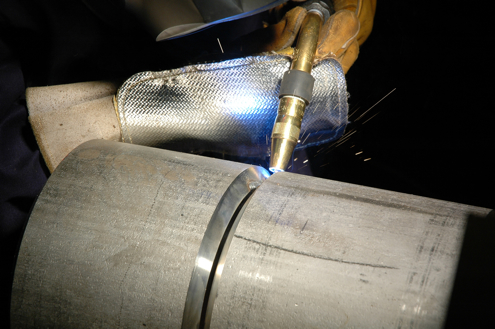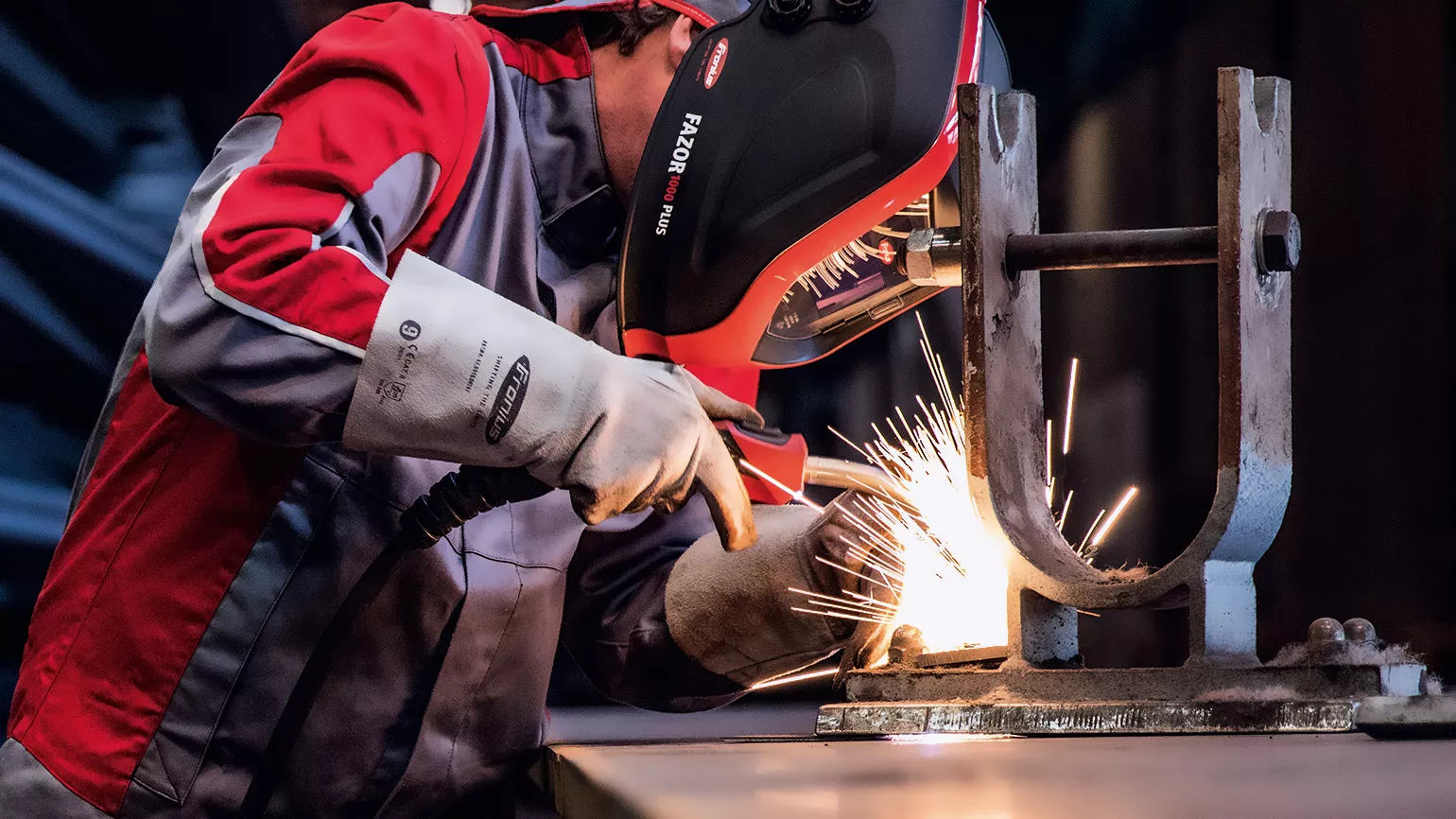Typical Welding Fixing Issues and How to Address Them Efficiently
Welding repair work frequently encounter an array of concerns that can jeopardize the honesty of the end product. Common issues include poor penetration, porosity, and imbalance, to name a few. Each problem provides special challenges that call for details methods for resolution. Comprehending these problems is crucial for welders intending to improve their results and abilities. This conversation will certainly check out these usual welding fixing concerns and efficient techniques to resolve them.
Poor Infiltration
Poor infiltration takes place when the weld metal stops working to completely fuse with the base material, causing weak joints and possible architectural failings. This issue often comes from insufficient heat input, incorrect electrode angle, or inappropriate welding rate. Welders might come across insufficient penetration as a result of a miscalculation of the necessary parameters for a particular material density or type. In addition, contamination on the base product's surface can prevent efficient bonding, exacerbating the problem. To attend to inadequate penetration, welders must guarantee appropriate settings on their equipment and keep a clean job surface area. Routine assessment of welds is recommended to determine any shortages early, enabling timely adjustments and the prevention of jeopardized architectural integrity in bonded settings up.
Porosity
Porosity is a common flaw in welded joints that materializes as small gas bubbles entraped within the weld metal. This defect can compromise the stability of the weld, leading to decreased stamina and possible failure under tension. Montana Mobile Welding and Repair Belgrade Welding. Porosity usually arises from contamination, moisture, or inappropriate welding methods, which allow gases to get away right into the liquified weld pool. To resolve porosity, welders ought to ensure correct surface area preparation, maintain a tidy functioning atmosphere, and make use of suitable welding parameters. Additionally, choosing the best filler material and shielding gas can minimize gas entrapment. Normal inspection and screening of welds can help recognize porosity early, assuring timely corrective actions are taken, consequently protecting the high quality and integrity of the bonded structure
Misalignment
Imbalance in welding can arise from numerous variables, consisting of incorrect setup and thermal expansion. Comprehending the origin creates is necessary for effective resolution. A number of improvement methods are readily available to straighten components and assure structural integrity.
Reasons of Imbalance
Welding misalignment commonly stems from a range of underlying problems that can jeopardize structural integrity. One main reason is improper fit-up of elements prior to welding, which can result in gaps and uneven surfaces. Variants in thermal growth during the welding procedure can likewise cause distortion, particularly if the products being signed up with have different coefficients of growth. Furthermore, insufficient fixturing and securing may fall short to hold elements safely in place, resulting in activity during welding. Poorly kept equipment, consisting of welding makers and devices, might introduce variances in the weld grain, more adding to misalignment. Operator error, stemming from insufficient training or experience, can also play a substantial role in developing misaligned welds.

Modification Techniques Readily Available
Addressing misalignment properly requires a combination of corrective methods tailored to the certain concerns available. One usual approach is using jigs or components to hold parts in the right placement during welding, making certain regular positioning. In addition, preheating the products can aid minimize distortion and boost fit-up. For substantial imbalance, mechanical realignment methods, such as making use of hydraulic jacks or clamps, can be used to correct the setting before welding. Post-weld heat treatment might additionally be required to ease anxieties caused by imbalance. Ultimately, careful evaluation and change throughout the arrangement phase can avoid misalignment issues from ending up being substantial troubles, promoting a smoother welding procedure and boosting general architectural integrity.
Distortion
Distortion is a common difficulty in welding that can occur from numerous variables, including uneven cooling and heating. Understanding the sources of distortion is vital for carrying out reliable prevention methods. Addressing this problem not just boosts architectural honesty but also improves the general quality of the weld.
Reasons for Distortion
When subjected to the intense heat of welding, materials usually undergo changes that can lead to distortion. This phenomenon largely arises from thermal growth and tightening throughout the welding process. As the weld area warms up, the material increases; upon cooling, it acquires, which can develop internal tensions. In enhancement, uneven heating across a work surface can aggravate these stresses, resulting in bending or bending. The kind of material also plays a substantial duty; metals with differing thermal conductivity and coefficients of development might respond in a different way, bring about unforeseeable distortions. In addition, inadequate joint style and poor fixturing can contribute to misalignment throughout welding, enhancing the likelihood of distortion. Comprehending these causes is important for reliable welding repair work and prevention methods.
Prevention Techniques
Efficient avoidance strategies for distortion throughout welding focus on regulating warm input and ensuring appropriate joint design. Keeping a consistent warmth input aids to lessen thermal development and tightening, which can result in distortion. Making use of methods such as pre-heating the workpiece can also minimize the temperature level gradient, advertising uniform heating. In addition, choosing ideal joint layouts, such as T-joints or lap joints, can boost stability and reduce stress focus. Implementing appropriate fixturing to safeguard the workpieces in position additionally aids in preserving alignment throughout the welding procedure. Lastly, staggered welding sequences can distribute heat more uniformly, protecting against localized distortion. By applying these methods, welders can substantially decrease the likelihood you could check here of distortion and boost the general high quality of their welds.
Breaking
Splitting is a common problem come across in welding repairs, commonly resulting from various variables such as inappropriate air conditioning rates, product choice, or poor joint preparation. The incident of splits can significantly endanger the honesty of the weld, bring about possible failings during operation. To address this concern, welders must first analyze the source, guaranteeing that materials are suitable and appropriately picked for the specific application. Additionally, managing the air conditioning price throughout the welding procedure is essential; fast air conditioning can induce stress and cause cracking. Correct joint design and prep work additionally contribute to decreasing the danger. Carrying out these approaches can improve weld high quality and toughness, inevitably minimizing the chance of cracking in completed weldments.

Insufficient Combination
A substantial problem in welding repair work is incomplete fusion, which happens when the weld metal does not adequately bond with the base product or previous weld passes - Belgrade Fabrication. This flaw can bring about weaknesses in the joint, possibly compromising the stability of the bonded framework. Aspects adding to incomplete combination include not enough warm input, inappropriate welding strategy, and contamination of the surface areas being signed up with. To resolve this problem effectively, welders ought to assure proper pre-weld cleaning and surface area preparation, in addition to adjust their welding specifications to attain ample infiltration and fusion. Normal inspection during the welding process can additionally help determine incomplete fusion early, enabling timely corrective procedures to improve the overall quality of the weld
Overheating
While welding repairs can boost structural integrity, overheating presents a substantial difficulty that can lead to product destruction. Too much warmth during welding can change the mechanical properties of metals, causing minimized strength, boosted brittleness, and bending. This sensation is specifically essential in high-stress applications where structural integrity is paramount. Recognizing overheating can involve aesthetic assessments for staining or distortion, along with checking temperature level throughout the welding procedure. To alleviate the risks related to overheating, welders must employ suitable techniques, such as regulating warm input, changing traveling rate, and making use of ideal filler materials. In addition, carrying out pre- and post-weld heat therapies can help restore material residential properties and boost the general quality of the fixing, ensuring lasting performance and safety.
Frequently Asked Inquiries
What Are the Usual Indications of a Welding Defect?

Exactly How Can I Examine My Welds for High quality?
To check welds for top quality, one can use aesthetic examinations, ultrasonic screening, and radiographic techniques. Each method ensures architectural stability, recognizes defects, and verifies adherence to defined requirements, inevitably boosting the dependability of the welded joints.
What Safety Precautions Should I Take While Welding?
When welding, one ought to focus on safety by using suitable individual protective devices, making certain correct ventilation, securing combustible materials away, keeping a tidy work area, and being conscious of surroundings to stop injuries and accidents.
Can I Repair a Weld Without Remodeling the Entire Joint?
Fixing a weld without redoing the entire joint is feasible, relying on the damages (Montana Mobile Welding and Repair Belgrade). Methods such as visit this site grinding, adding filler material, or making use of a welding procedure can successfully attend to certain problems while preserving the bordering structure
What Devices Are Crucial for Reliable Welding Repair Works?
Essential devices for effective welding repairs include a welding device, cable brush, grinder, protective equipment, clamps, and filler products. Each device plays a vital role in guaranteeing top quality and safety during the repair work procedure. Porosity usually occurs from contamination, wetness, or incorrect welding strategies, which allow gases to run away right into the molten weld pool. Inadequately kept devices, including welding makers and devices, may introduce incongruities in the weld bead, more adding to imbalance. When subjected to the extreme heat of welding, products usually undergo adjustments that can lead to distortion. Breaking is a common problem run into in welding repair services, usually resulting from different elements such as improper cooling prices, material option, or insufficient joint prep work. A considerable concern in welding repair services is insufficient blend, which occurs when the weld steel does not properly bond with the base material or previous weld passes.